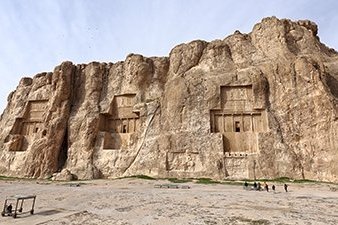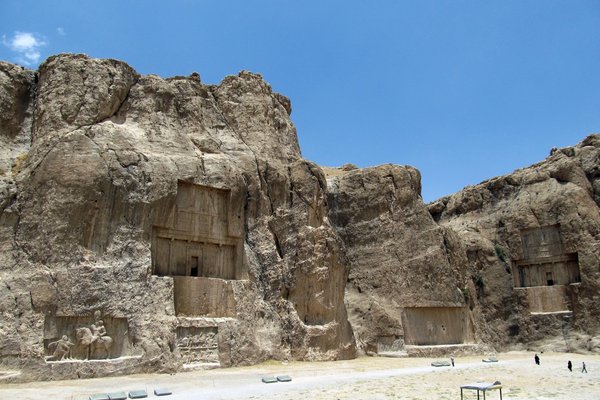Iran
Nasqsh-e Rostam and Naqsh-e Rajab
Nasqsh-e Rostam and Naqsh-e Rajab are mostly known for their bas-reliefs.
They lie a few hundred metres apart. Nasqsh-e Rostam is an ancient necropolis with reliefs cut into the cliff, from both the Achaemenid and Sassanid periods. Naqsh-e Rajab has four early Sassanid reliefs with inscriptions.
Site Info
Official Information
- Full Name
- Nasqsh-e Rostam and Naqsh-e Rajab (ID: 898)
- Country
- Iran
- Status
-
On tentative list 1997
Site history
History of Nasqsh-e Rostam and Naqsh-e Rajab
- 2022: Postponed
- Due to >1 nomination proposed by State Party in same year (2022)
- 1997: Added to Tentative List
- Added to tentative list
- Type
- Cultural
- Criteria
Links
- UNESCO
- whc.unesco.org
All Links
UNESCO.org
- whc.unesco.org — whc.unesco.org
News Article
- May 6, 2024 tehrantimes.com — Water damage at Naqsh-e Rostam
Community Information
- Community Category
- Archaeological site: Near Eastern
Travel Information
Recent Connections
News
- tehrantimes.com 05/06/2024
- Water damage at Naqsh-e Rostam
Recent Visitors
Visitors of Nasqsh-e Rostam and Naqsh-e Rajab
- AC
- Afshin Iranpour
- Alexander Parsons
- Ali Zingstra
- Ammon Watkins
- Aspasia
- Bernard Joseph Esposo Guerrero
- Bram de Bruin
- Carlo Sarion
- Dimitrios Polychronopoulos
- Erik Jelinek
- Hammeel
- Jacob Otten
- Jarek Pokrzywnicki
- Javier
- Jean Lecaillon
- Jon Opol
- Juha Sjoeblom
- Kevin247
- Pieter Dijkshoorn
- Reisedachs
- Roman Bruehwiler
- Sergio Arjona
- Solivagant
- Stanislaw Warwas
- Szucs Tamas
- Tarquinio_Superbo
- Thomas Buechler
- Tony H.
- Wojciech Fedoruk
- Zizmondka
Community Reviews
Show full reviewsJuha Sjoeblom
Nasqsh-e Rostam and Naqsh-e Rajab
Nasqsh-e Rostam and Naqsh-e Rajab (On tentative list)

Site visited December 2015. This compact site is easy to dismiss only as a usual side trip from nearby Persepolis. The monumental necropolis of Persian kings with numerous rock reliefs is impressive enough to be a World Heritage Site. But there are certain reasons which make inscription complicated.
I guess almost everyone visit Naqsh-e Rostam and Naqsh-e Rajab on the same day trip with Persepolis so the logistics are the same. Just ask your chauffeur or taxi driver to stop at these sites before or after Persepolis. I visited this site after Persepolis and before heading to Pasargadae.
Naqsh-e Rostam 6 kilometres north of Persepolis is an ancient necropolis of four Persian kings from both the Achaemenid and Sassanid periods. These large tombs have been cut in to cliff face high above the ground. The facades of the tombs have been carved in the shape of cross. The entrance to each tomb is at the center of each cross. On top of the entrances are large carved panels. The horizontal beam of each of the facades is believed to be a replica of the entrance of Persepolis. Underneath the tombs are rock reliefs, the most famous of which shows the Roman Emperor Valerian held captive by king Shapur I.
The tombs are believed to belong to following kings: Darius I, Xerxes I, Artaxerxes I and Darius II. There is also a fifth unfinished tomb which is likely that of Darius III. The tombs were looted at the …
Keep reading 0 comments
